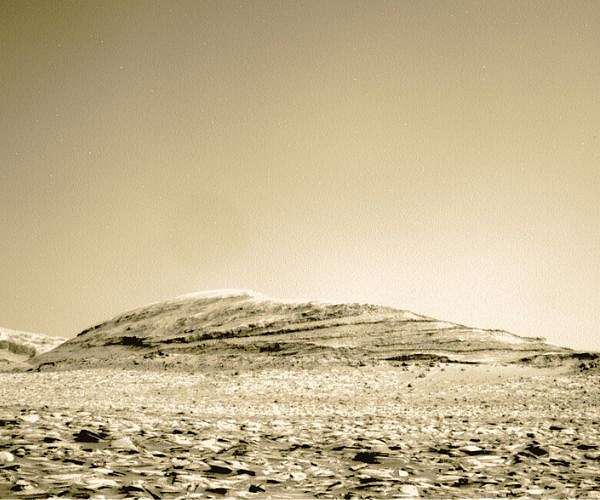
The Ones Who Make Curiosity Go: Sols 4001-4003
by Michelle Minitti, Planetary Geologist at Framework
Pasadena CA (JPL) Nov 08, 2023
Earth planning date: Monday, November 6: It is a time of milestones for Curiosity, with the passage of Sol 4000 over the weekend (celebrated here and here) and the start of her sixth solar conjunction this week. Each time Curiosity (and Mars) slip on the other side of the Sun from Earth, the science and engineering teams miss her and the new discoveries she makes every sol. I dare say we also miss each other, the people that have (mostly virtually) gathered week in and week out for 11 years to make those discoveries possible. This blog is usually a celebration of what Curiosity planned on Mars each day, but let’s turn the tables and celebrate at least a small part of the team that makes it all possible. How does the magic happen?
Each day we come together to build a plan, we start with strategic guidance from our long term planners like Sanjeev and John who make sure we keep our big picture goals and targets in mind. We get tactical guidance from science leads like Aileen and Scott and operations leads like Elena and Nicky so that we all have the key constraints on planning for a particular day. It is up to the geology and environmental theme leads like Susanne, Jeff, Alex, and Michael to lead the science team members in attendance to build plans that, to the best of their abilities, encompass all the observations of interest on a particular sol within the constraints of that particular plan. The theme leads work hand-in-hand with the “keepers of the plan” like Ryan and Becky who capture all the details of the observations of interest – from start times, to duration, to data volume, to numbers of images – that are essential to making sure everything fits in the plan.
Identifying and vetting contact science targets for APXS and MAHLI is typically the first order of business for the geology theme group. Lucy and Cat from APXS use their eagle eyes to pick targets of interest, and rover planners like Aaron and Emily are in charge of figuring out if a particular target can be reached by the arm. If a target is too challenging, it is up to science-RP mediators like Bill and Bob to iterate between science and engineering to find targets that APXS and MAHLI can reach and which meet the science team’s goals. Once targets are decided on, it is up to Deirdra and David from MAHLI to design imaging sequences that capture the targets in perfect focus and lighting. On days where we also drive, surface property scientists like Cathy and Ron work with the rover planners to identify safe and efficient routes for Curiosity to traverse.
After contact science planning is in the works, it is time to plan remote science. Do you enjoy the spectacular, sweeping vistas of Gale crater as captured by Mastcam? Thank folks like Tex and Tim, who work overtime fitting in the team’s requests to image no shortage of fascinating features at each stop. They also work with the MAHLI team to see the planning of MARDI images through a given sol. Whether it is Amaury and Valerie in France, or Patrick and Margie in New Mexico, the ChemCam crew must not only identify and target interesting features to shoot with the laser, but targets near and far to image with the RMI, and sometimes even the sky for measurements of Martian atmospheric chemistry. Doug and Kevin help plan ECAM images for a wide variety of purposes. Practically, the rover planners use ECAM images to plan drives and establish rover stability, while the science team uses them to identify and select targets. Scientifically, ECAM images are the go-to tool of the environmental theme group for images and movies of clouds and dust devils.
While most of our contact and remote observations are specific to the parking spot on a given sol, REMS and RAD observations care less about “where” than “when.” Sofia and Jorge from REMS, and Bent and Cary from RAD work with the environmental theme group to make sure their instruments take measurements at regular intervals – sol in and sol out – to produce unbroken records of the Martian environment. DAN cares about both “where” and “when,” so DAN team members like Denis and David make sure DAN actively pings the subsurface in back of the rover as soon as we arrive at a new parking spot, and then subsequently gathers passive data as we sit for contact and remote science.
CheMin and SAM use are not a daily (or even weekly!) occurrence, but when it is time to collect a drill sample or measure methane in the atmosphere, their teams stand at the ready. CheMin team members like Liz and Patricia and SAM team members like Jean-Yves and Christine make sure that their instruments are ready to receive sample, and then work with their teams to analyze the data as quickly as possible to reveal to the whole science team what Martian secrets have been revealed.
As you can see, it takes an amazing, dedicated team of people – only a small handful who I could highlight! – to make one sol of Curiosity observations a reality. If the people above are the engine that makes Curiosity go, then the fuel is our project science leaders, Ashwin and Abigail. They lead by example, often serving in many of the roles listed above, and form this diverse group of scientists and engineers with many ambitions into one team with one goal: moving ever-forward to new discoveries. Come back at the end of this month to see where we take Curiosity next!
Related Links
Curiosity Mars Science Laboratory
Mars News and Information at MarsDaily.com
Lunar Dreams and more
